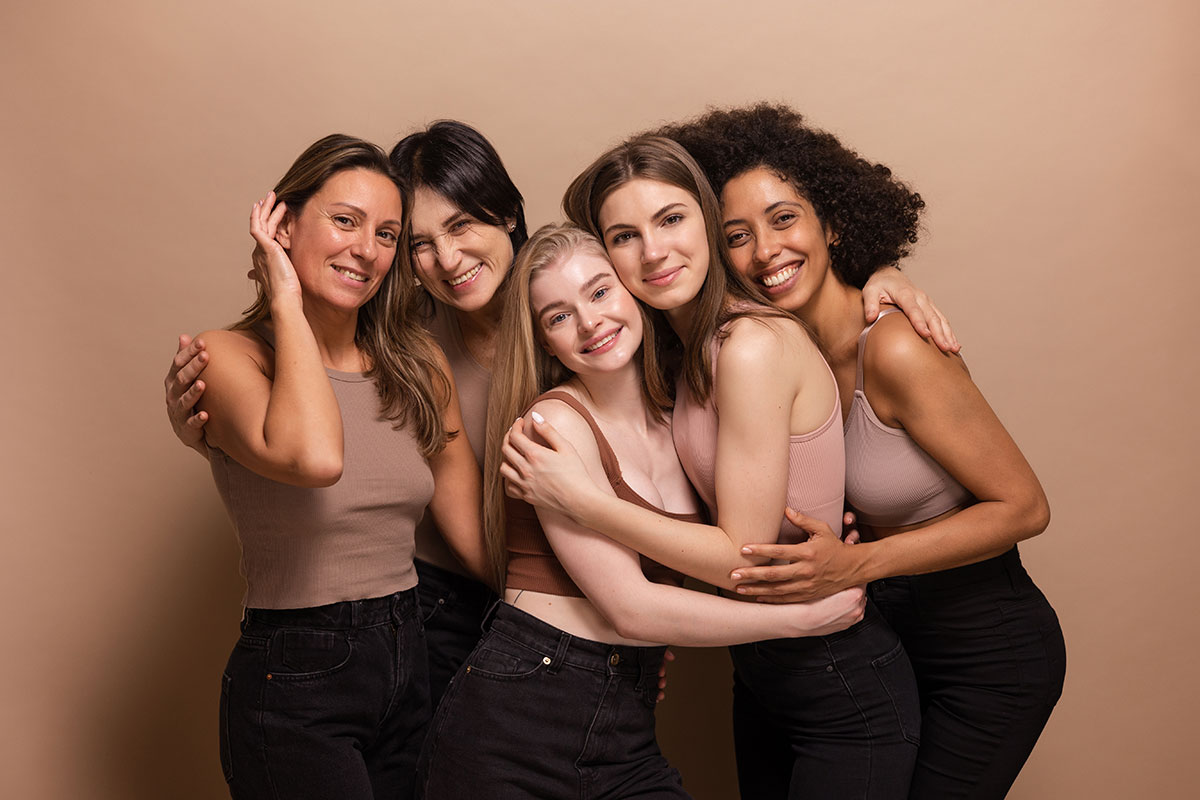Developed in 1975 by Thomas B. Fitzpatrick, a Harvard dermatologist, as a way to classify the typical response of different types of skin to ultraviolet light, the Fitzpatrick scale remains a recognized tool for dermatological research into human skin pigmentation.
According to this system there are six types of skin, classified from 1-6.
To determine it you will have to answer 9 questions in total which will give you a final score between 0-40.
0 being very pale and 40 being very dark.
Part I – Genetic Disposition
Your eye color is
Light blue, light gray or light green = 0
Blue, gray or green = 1
Hazel or light brown = 2
Dark brown = 3
Brownish black = 4
Your natural hair color is
Red or light blonde = 0
Blonde = 1
Dark blonde or light brown = 2
Dark brown = 3
Black = 4
Your natural skin color (before sun exposure) is
Ivory white = 0
Fair or pale = 1
Fair to beige, with golden undertone = 2
Olive or light brown = 3
Dark brown or black = 4
How many freckles do you have on unexposed areas of your skin?
Many = 0
Several = 1
A few = 2
Very few = 3
None = 4
Part II – Reaction to sun exposure
How does your skin respond to the sun?
Always burns, blisters and peels = 0
Often burns, blisters and peels = 1
Burns moderately = 2
Burns rarely, if at all = 3
Never burns = 4
Does your skin tan?
Never — I always burn = 0
Seldom = 1
Sometimes = 2
Often = 3
Always = 4
How deeply do you tan?
Not at all or very little = 0
Lightly = 1
Moderately = 2
Deeply = 3
My skin is naturally dark = 4
How sensitive is your face to the sun?
Very sensitive = 0
Sensitive = 1
Normal = 2
Resistant = 3
Very resistant/Never had a problem = 4
Add (genetic disposition) and (sun exposure) totals to find your Fitzpatrick Skin

Results from chart questions:

Skin Type I
A score of 0 – 7
- Unexposed skin that is white
- Blue or light colored eyes
- White or very fair skin and freckles
Skin Photo Type I -pale complexion that tans little or not at all, burns easily and severely, and then peels.
Individuals with Skin Photo Type I do not have the ability to create natural protection from ultraviolet exposure, and are particularly susceptible to burning and damage from UV radiation.

Skin Type II
A score of 8 – 16
- Fair skin
- Blue or hazel eyes
- Naturally blonde, light brown or red hair
Skin Photo Type II usually burns easily and severely (painful burn), and tans minimally and lightly.Individuals with Skin Photo Type II are not recommended to use a tanning unit.

Skin Type III
A score of 17 – 25
- Light brown skin
- Blue or hazel* eyes
- Brown hair
- Unexposed skin that is white
Skin Photo Type III burns moderately and usually develops an average tan.

Skin Type IV
A score of 26 – 30
- Moderate brown skin
- Dark-brown hair
- Dark eyes
- Unexposed skin that is white or light brown, and
Skin Type IV burns minimally, tans easily with each exposure and exhibits immediate pigment darkening.

Skin Type V
A score of 28 – 34
- Dark brown skin
- Dark-brown hair
- Dark eyes
- Unexposed skin that is light brown
Skin Type V rarely burns, tans easily and substantially, and always exhibits immediate pigment darkening.

Skin Type VI
A score of 35+
- Naturally very dark brown – black skin
- Dark-brown – black hair
- Dark eyes
- Unexposed skin that is brown
Skin Type VI, tans easily, never burns and exhibits immediate pigment darkening.

The undertone of the skin
The undertone corresponds to a shade of the skin.
- Cold (pink, blue)
- Warm (yellow, golden, reddish brown)
- Neutral (a mix of both)


